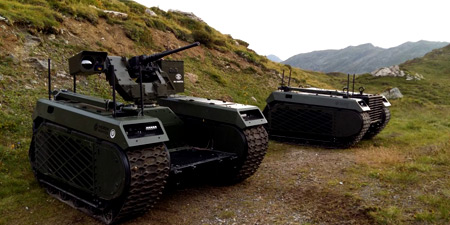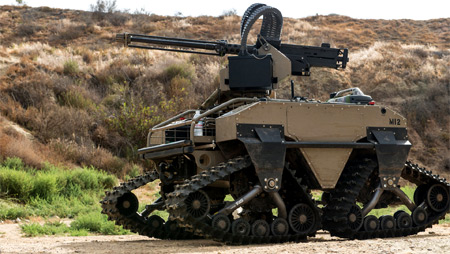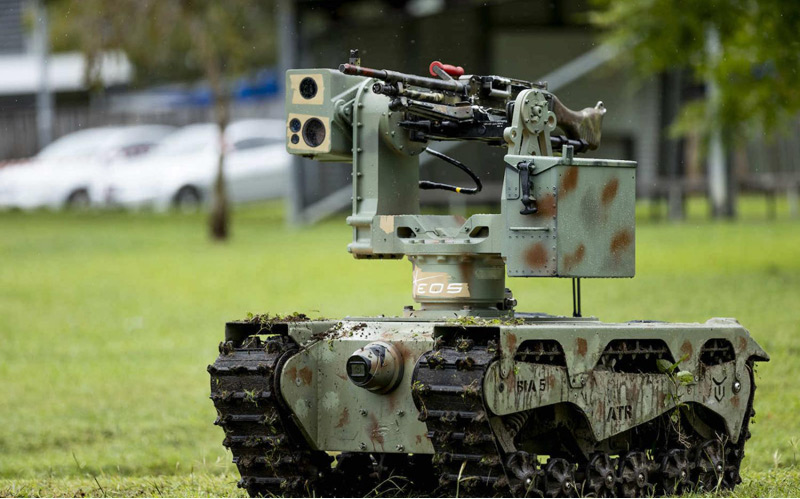In the good old days, featuring autonomous weapon systems in science fiction movies was not such a hyperbole which  brought the protagonist of the movie into overnight stardom but held ardent movie goers in Hollywood spellbound. To the astonishment of these audiences, these elements have now invaded engineering laboratories and the battlefield. It is understood that autonomous weapon systems have got a number of operational advantages that mainly comprise speed and agility.
brought the protagonist of the movie into overnight stardom but held ardent movie goers in Hollywood spellbound. To the astonishment of these audiences, these elements have now invaded engineering laboratories and the battlefield. It is understood that autonomous weapon systems have got a number of operational advantages that mainly comprise speed and agility.
Advanced robotic technologies
Autonomous weapon systems are used for expeditious and swift proliferation. This technology is concentrated with a few powerful and affluent countries which possess the resources needed to invest hugely in research conducted on advanced  robotic technologies with Artificial intelligence (AI). According to (Scharre, 2019), it is projected that Moore’s Law (observation that the number of transistors in a dense integrated circuit doubles about every two years), the slumping cost of production that is included with 3D printing, will instantly enable a considerable number of state and non-state actors to acquire killer robots.
robotic technologies with Artificial intelligence (AI). According to (Scharre, 2019), it is projected that Moore’s Law (observation that the number of transistors in a dense integrated circuit doubles about every two years), the slumping cost of production that is included with 3D printing, will instantly enable a considerable number of state and non-state actors to acquire killer robots.
In this context, researchers in the military, point out on some advantages of further developing and deploying autonomous weapon systems. They highlight that autonomous weapon systems act like a ‘force multiplier’; in any mission thus requiring fewer soldiers where the potency of every soldier is considered being of a higher and greater quality. These systems have the potential to expand battlefields where they give room for combat to gain access into areas which were previously inaccessible.
It is said that autonomous weapon systems could reduce the number of casualties by removing human soldiers from missions that are critical and perilous.
Pentagon’s Unmanned Systems Roadmap
Researchers highlight that the Pentagon’s Unmanned Systems Roadmap 2007-2032 dispenses further motivation to stalk autonomous weapon systems. It has been found that robots are better suited for tedious, menacing and vicious missions. Justifying this, Clapper et al. (2018) said that, “Examples given for each mission include long sorties, bomb disposal and operating in nuclear clouds or areas with radioactivity”.
 Jeffrey S. Thurnher of the United States Naval War College said, “LARs (Lethal Autonomous Robots) have the unique potential to operate at a tempo faster than humans can possibly achieve and to lethally strike even when communication links have been severed”. Meanwhile, researchers, divulge that some roboticists, as well as military experts, have come up with an argument that autonomous weapon systems should not only be considered as scrupulously and morally admissible and tolerable but that it would be morally desirable to human fighters. Agreeing with Roboticist Ronald Arkin, they further highlight that robots in the near future will operate in a more humanely manner in the battlefield.
Jeffrey S. Thurnher of the United States Naval War College said, “LARs (Lethal Autonomous Robots) have the unique potential to operate at a tempo faster than humans can possibly achieve and to lethally strike even when communication links have been severed”. Meanwhile, researchers, divulge that some roboticists, as well as military experts, have come up with an argument that autonomous weapon systems should not only be considered as scrupulously and morally admissible and tolerable but that it would be morally desirable to human fighters. Agreeing with Roboticist Ronald Arkin, they further highlight that robots in the near future will operate in a more humanely manner in the battlefield.
Therefore, autonomous weapon systems could attack a target without human intervention. Researchers affirm that these systems have the potential to revolutionise warfare where researchers that these systems would be faster and brisk, more authentic and accurate and more supple and resilient than that of the existing weapon systems and could limit the number of casualties at a war.Some military experts said that autonomous weapon systems not only confer notable and compelling strategic and tactical advantages or whip hand in the battlefield but also were more desirable on moral grounds to the use of human combatants.
In this light, artificial intelligence becomes an important element of the autonomous weapon systems, researchers say that artificial intelligence is merely a trivial part of an entire holistic programme. They add that when you have deep learning, machine learning and human-level intelligence, it mimics humans. Small-scale AI research would conclude that it is dangerous. But AI can be used for many good things as well and is a much better form of technology which could enhance the entire spectrum of weaponry.






